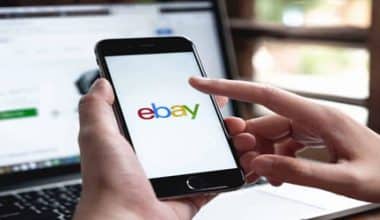The game-changer is social media monitoring. Especially since consumers have shifted from offline to online buying, e-commerce has risen to the top of the retail food chain.
More and more companies and online enterprises are focusing on improving their online presence. This is where social media monitoring comes in.
In this post, we’ll look at some of the top tools on the market, as well as go over the setup and best practices, so you can start participating in the conversation right away.
What is Social Media Monitoring?
Social media monitoring is the process of finding and determining what is being said about a brand, individual, or product via various social and internet platforms.
How Does It Function?
Similar to search engines that send crawlers to the outer reaches of the Internet, social media monitoring is an algorithm-based tool that crawls and continuously scans sites. Once indexed, sites can be searched using queries or strings.
What Impact does it have on e-commerce Businesses?
Social media listening might affect how you sell your online store. Companies that engage in social media monitoring regularly search digital media channels for keywords or phrases that are directly relevant to their brands.
Once you’ve established your company’s public reputation, you can:
- Respond to customers in real-time on social media sites.
- Find out how specific demographics feel about your brand.
- Utilize favorable feedback in marketing, etc.
- Utilize negative feedback to fix mistakes in your company.
- Increase brand credibility and authenticity.
- Refine marketing spend by eliminating outlets with the lowest or lowest levels of interaction.
- Uncover which social media marketing campaigns are doing the best and the worst.
- Use advanced reporting tools to calculate return on investment.
Social media monitoring may provide you with real-time insight into what is being said about your brand, gathering publically available data and organizing it in a way that is advantageous to you. You may increase internet visibility for your e-commerce store with the aid of social monitoring tools. You may respond to what others are saying about your organization and reconnect with potential clients through the same social networks.
How to Set Up Social Media Monitoring
Step #1: Choose the most appropriate social media monitoring tool for your needs.
If you haven’t narrowed it down yet, you can check out the list of the best social media monitoring tools further below.
Step #2: Generate a list of search terms.
What terms or names do consumers associate with your brand?
People may remember your veggie burgers more than your CEO if you own a fast food company. If you’re a 5-person AI startup, the name of that famous investor might be your first point of contact. Here are some places to begin:
- @MoodyBlooms and #MoodyBlooms are examples of brand or company names used as handles and mentions.
- Product name(s) (for example, #PeekFreans, #MoonPie)
- Names of thinking leaders, CEOs, spokespersons, etc.
- Slogans or catchphrases
- Branded hashtags (such as #optoutside, #playinside, and so on)
You should also do all of the following for each of your big competitors.
Next, broaden your sightlines to include your industry, sector, or specialization.
- Industry hashtags or keywords (for example, #inboundmarketing, #SEO, etc.)
- Hashtags or terms associated with a community or group (for example, #banffcentreartist)
- Platform-specific hashtags or keywords (for example, #instagramcontainergardeners, YouTubers)
- Location-specific hashtags or keywords (for example, #MileEnd, #JasperNationalPark, #QueenWestWest)
Step #3: Configure your brand monitoring software’s searches.
Which tool you select will determine this. In our humble opinion, the more simultaneous and stored searches a tool enables, the better. (Typing your main competitor’s name into the Instagram search bar every day is depressing.)
Step #4: Monitor your streams on a regular basis.
If you’re the brains and thumbs behind the firm Instagram, you’ll be monitoring your streams daily, hourly, or even daily, or perhaps you’ll never stop checking them.
If, on the other hand, shaking hands and kissing newborns on social media isn’t your job description (but cutting bouquets or training horses is), make a reminder for yourself to go through your search results. You’ll thank us later, we promise.
Step #5: Remember to reread your search phrases and tweak them as needed.
Social media monitoring, like other work involving social media, is never truly finished. After you’ve set yourself up and been monitoring for a few weeks, take another look to see whether your search is catching everything you want while filtering out everything you don’t.
Consider adjusting your search parameters if you’re getting too many results, especially unrelated ones. If you’re not seeing anything come up, enlarge them.
Tips For Successful Social Media Monitoring
#1. Monitor all languages that are spoken by your customers.
For North Americans accustomed to working in a single language, this one can be easy to overlook. But, if your company recently purchased a start-up in Montreal, remember to set up searches using French, English (and Franglais??) words and phrases.
Likewise, if your new customer requires a lot of work in a language you don’t understand, collaborate with the local team to learn how to say “love it” in Vietnamese or “the worst” in Russian.
Depending on the size and relevance of your audience, you may wish to employ a language-specific social monitoring tool.
Many social media monitoring tools (cough, Hootsuite) allow you to share rights with team members so you may obtain help where you need it, such as from French or Spanish colleagues.
#2. While monitoring, feed your hashtag and keyword strategy.
If you’ve ever been perplexed as to what hashtag to add to an Instagram post or halted in fear as you think about what will happen to your views if you don’t locate the correct term for your YouTube video, social monitoring can assist.
For example, the word cloud in Hootsuite Insights will give you suggestions for keywords or hashtags to add to your ongoing monitoring operations. Nevertheless, it can also suggest phrases and hashtags that you should utilize on your own posts as part of your broader hashtag strategy.
Understanding the language your followers use (for example, are they talking about “container gardening” or “balcony plants”) will ensure you can assist them to find your fantastic material.
#3. Find influencers and brand advocates you might wish to collaborate with.
Keeping an eye out for repeat offenders is another clever strategy to improve your social monitoring. Pay attention to folks who engage with or discuss your brand on a regular basis while you babysit the unending scroll.
If they are constantly applauding or cheerleading and have their own following, you might consider adding them to your influencer marketing campaign.
Selecting a tool that can perform complex arithmetic to determine who your biggest admirers are is an easy victory.
#4. Set up alerts for unusual behavior.
If your sentiment plummets as a result of your new TV commercial, or if your competitor releases a terrifyingly fantastic new product, the social team should be among the first to know.
A social media crisis (or any other type of PR issue) can occur at any time. Social media monitoring can notify you if mention volume spikes or social sentiment meters turn red across the board.
The right tool will not only warn you but will also provide you with real-time insights to assist you to make decisions about how to tackle the problem.
#5. Share your findings.
Speaking of sharing, let the rest of your team (or corporation) know what you’re witnessing.
Oftentimes, social media managers, humble as we are, forget that we have an unmatched view of our organization’s reputation and place in the world. How much do you want to wager that your sales team, let alone your CEO, has the time, know-how, or tools to sift through the Niagara Falls of opinions and feelings that the world’s 4.5 billion social media users are posting online?
Social media monitoring reports are vital for two reasons:
- confirming that your effort is worth 24% of the marketing budget, and
- ensuring that your insights about your current and future customers reach decision-makers.
Hence, whether your organization is customer-centric or data-driven, we recommend selecting a tool that seamlessly blends social media monitoring with bespoke reporting.
Social Media Monitoring Tools
We’ve gathered three of the most popular social media monitoring services.
#1. Hootsuite
Monitoring social media is one of several tools provided at Hootsuite for managing social media. Hootsuite allows you to build up automated crawls of social media information based on mentions, keywords, hashtags, and locations. It also gives real-time audience insights to assist you in determining how your audience feels about your brand, detecting thought leaders, and receiving fast warnings if there are unusually high amounts of mentions. Furthermore, Hootsuite interfaces with over a hundred apps to expand the capabilities of its dashboard.
Instagram, Facebook, Twitter, YouTube, LinkedIn, Pinterest, blogs, forums, and other platforms are all supported.
Pricing: The Professional plan comes with a 30-day free trial and costs $19 per month after that. It allows you to link one user and up to ten social media profiles. Every package includes unlimited post-scheduling and an aggregated inbox for messaging.
The Team plan is $99 a month and includes up to three users and 20 social media profiles, as well as team management tools like assigning specific comments to different team members.
The Business plan is $599 a month and includes more than 5 users, 35 social media accounts, 24/7 priority support, and integrations with Zendesk, Slack, Basecamp, and other services.
The Enterprise package includes custom solutions as well as additional features such as quarterly business reviews and team performance reports.
The pricing page for Hootsuite has more information.
#2. Sprout Social Media Platform
Similar to Hootsuite, Sprout Social’s social media management software includes monitoring and interaction tools. For social monitoring and engagement, Sprout Social offers two distinct functions.
All of your social media mentions and messages will be delivered to your Smart Inbox. Without tagging your social media profile, the discovery tool enables you to search for certain phrases on Twitter or Instagram, including mentions.
A social media monitoring report in the form of a calendar is provided below. You may monitor comments and mentions across social media platforms as well as the number of daily interactions with a brand.
Prices: A 30-day free trial is available for all plans. The Basic subscription is $99 per month and includes 5 social media profiles to connect, an all-in-one social media inbox, the ability to create and publish posts, profiles, keywords, and location monitoring, among other features.
The Professional plan is $149 per month and contains all of the capabilities of the Standard plan as well as competitive reports for Instagram, Facebook, and Twitter, incoming and outgoing message content labeling, bespoke workflows for multiple approvers and phases, and more.
The Advanced plan costs $249 per month and includes 10 social media profiles to connect, all Professional plan features, Message Spike Alerts for increased message activity, a digital asset and content library, chatbots with automation tools, saved and suggested replies, Automated Link Tracking, and more. Sprout Social’s price page has more details.
#3. Agora Pulse
Agora Pulse is an all-in-one social media management tool with scheduling, monitoring, interaction, and analytics functions. All of your social media mentions are collected in the inbox, and its listening feature allows you to search for keywords, URLs and handles on Twitter. Agora Pulse also lets you watch comments on your Facebook and Instagram adverts.
Here is the dashboard, where you can instantly respond to client comments across multiple social media networks.
Facebook, Twitter, Instagram, LinkedIn, and YouTube are all supported platforms.
Pricing: A 30-day free trial is available. The Pro plan costs $79 a month and allows you to link up to 10 social media accounts.
The Premium plan costs $159 a month and allows you to link up to 25 social media profiles.
With 8+ people and 40+ social media profiles to connect, the Enterprise plan includes bespoke price possibilities. You may find more information on the Agora Pulse pricing page.
How Could Social Media Monitoring Assist You in Creating More Effective Campaigns?
Increasing your social monitoring should be a key objective in any industry.
The more closely you monitor what people are saying about your brand, the better you will be able to offer your target demographic.
Similarly, you can build deeper bonds with your followers and consumers. This is because you are already aware of their wants, needs, and pain areas.
To do so, you must have access to the appropriate social media monitoring tools.
Related Articles
- MEDIA MONITORING: Top Media Monitoring Tools In 2023
- INSTAGRAM MANAGEMENT TOOLS: Uses, Free Tools & Pricing
- BRAND MONITORING: Definition and Detailed Guide
- HOW TO USE INSTAGRAM FOR BUSINESS
- How To Market Your Business Anywhere: 2023 Ideas & Tips






